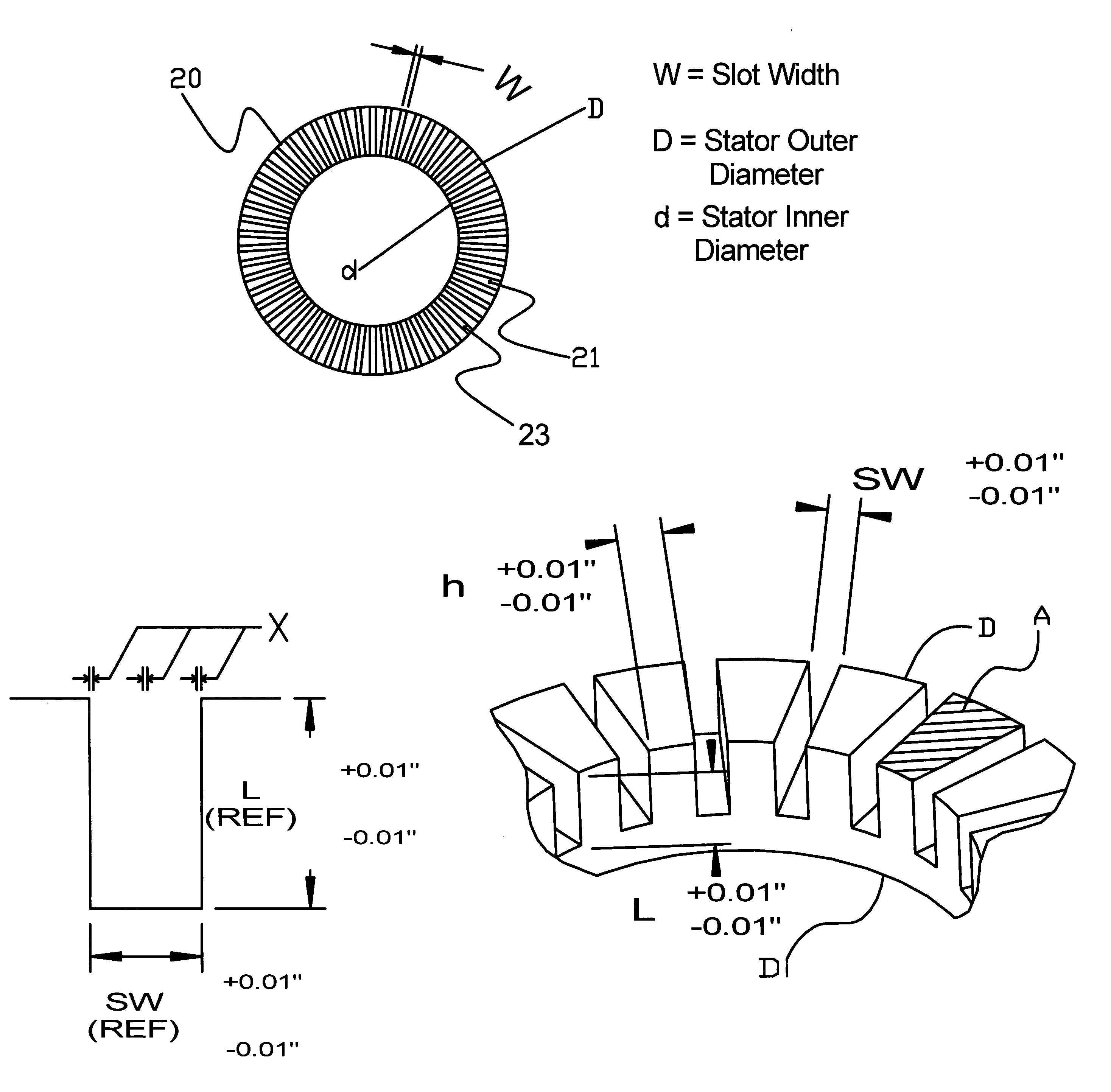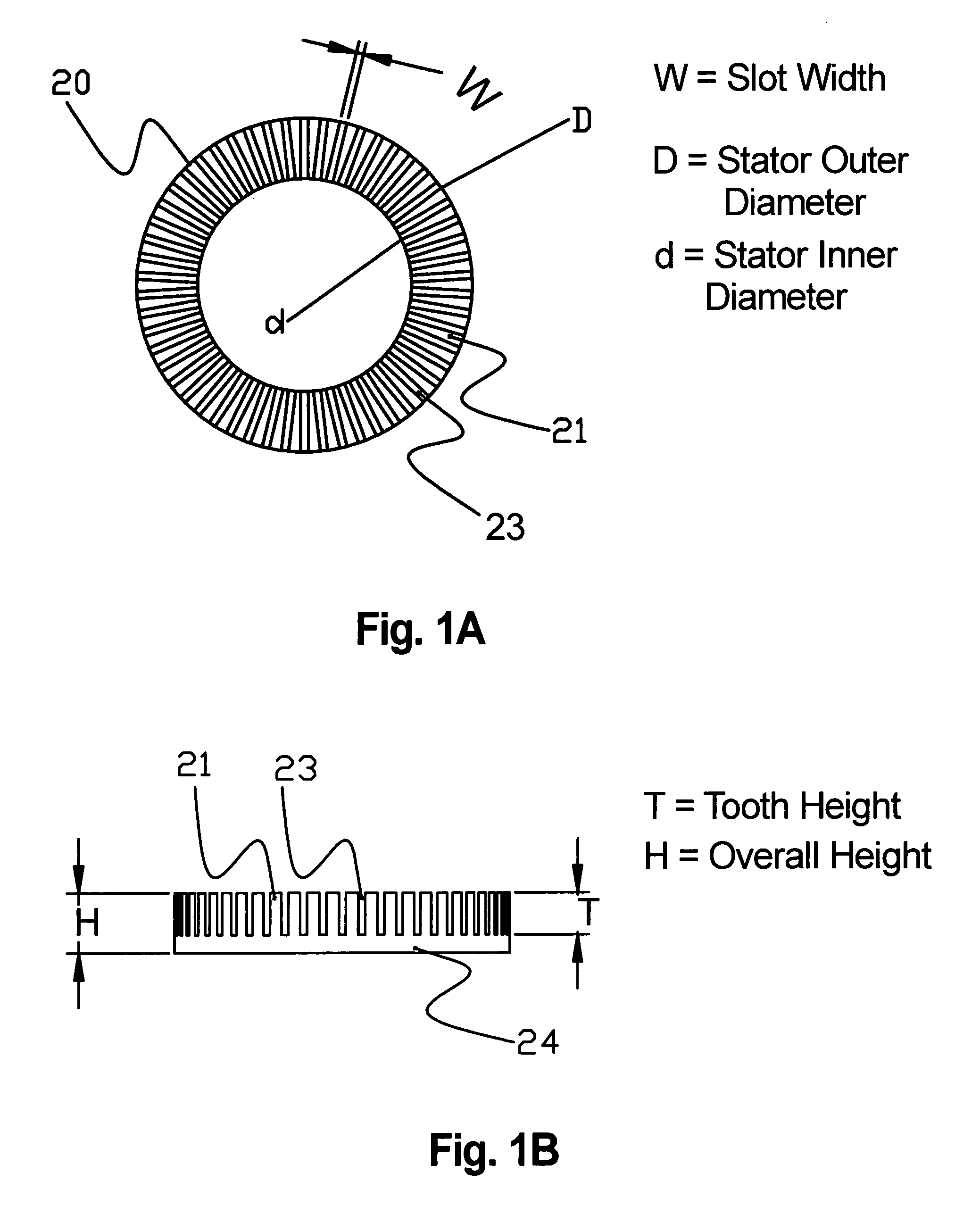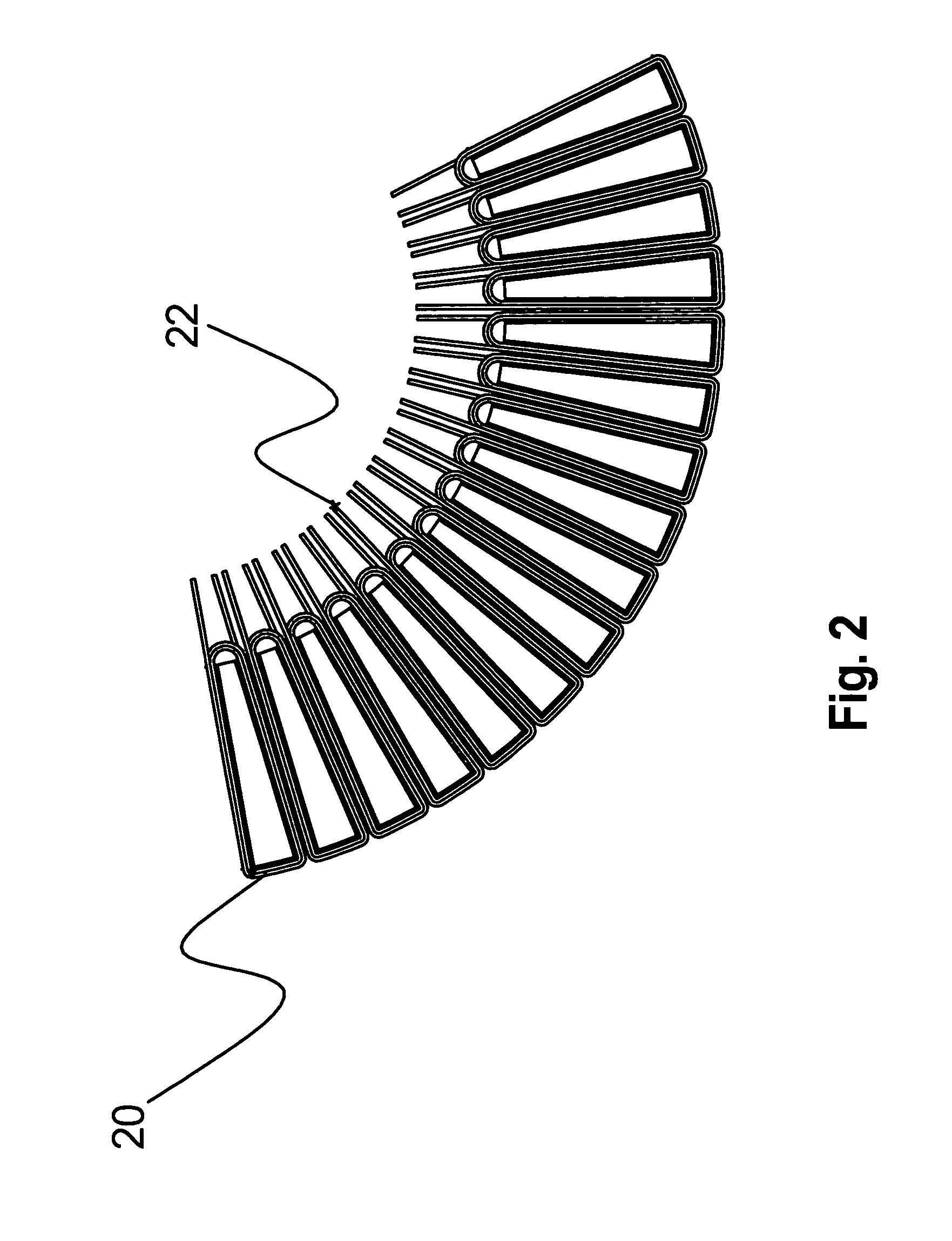Efficient high-speed electric device using low-loss materials
- Summary
- Abstract
- Description
- Claims
- Application Information
AI Technical Summary
Benefits of technology
Problems solved by technology
Method used
Image
Examples
example
[0124]A motor has been designed according to the electric machine concepts described above. The magnetic core of the motor was formed from Metglas® alloy 2605SA1, and is slotted with 54 equally spaced teeth. The stator winding is a single layer of 26+ / −1 turns of a coil with resistance of about 0.011 Ω at room temperature. The rotor assembly was constructed from 36 rotor magnets arranged with alternating polarity in a rotor plate. The rotor magnets are rare earth / iron / boron magnets with maximum energy product greater than 36 MGOe and intrinsic coercive force greater than 21 kOe. Performance characteristics of this electric machine are set forth table 4 below:
[0125]
TABLE 4EXEMPLARY PERFORMANCEInverter320Vrms lineReal Output Power80852WattsShaft torque214N-mSpeed3600rpmEfficiency94%Machine CoolingLiquidPole Pairs18Slots per Stator54Overall Machine SizeOutside Diameter308mmLength117mmElectrical, Phase PropertiesKe66Vrms / krpm lineKe0.363V-sTHD of Ke2.9%Resistance11.8m-ohmInductance85.8u...
PUM
 Login to View More
Login to View More Abstract
Description
Claims
Application Information
 Login to View More
Login to View More - R&D
- Intellectual Property
- Life Sciences
- Materials
- Tech Scout
- Unparalleled Data Quality
- Higher Quality Content
- 60% Fewer Hallucinations
Browse by: Latest US Patents, China's latest patents, Technical Efficacy Thesaurus, Application Domain, Technology Topic, Popular Technical Reports.
© 2025 PatSnap. All rights reserved.Legal|Privacy policy|Modern Slavery Act Transparency Statement|Sitemap|About US| Contact US: help@patsnap.com



